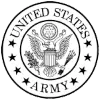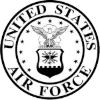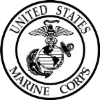Available 24/7
Professional Instruction
Free Training Materials






Course Details
The Fundamentals of a Windows Server Infrastructure - 10967 course is a 5-day course that is intended for students looking to learn the core knowledge and skills needed to build a Windows Server infrastructure with Windows Server 2012.
The course covers the networking, security, and system administration information needed to implement a Windows Server infrastructure. Students will learn the basics of installation and configuration, storage, network infrastructure, network components, network protocols, server roles, Active Directory Domain Services (AD DS), Group Policy, IT security, server security, network security, security software, monitoring server performance, and maintaining a Windows Server.
Students will learn the foundational level knowledge to prepare students to start a career or cross train in Microsoft Windows Server technologies.
Topics covered in the course include:
- Performing a local media-based installation of Windows Server 2012.
- Selecting appropriate storage technologies and configure storage on a Windows Server.
- Describing fundamental network components and terminology so you can select an appropriate network component.
- Implementing a network by selecting network hardware components and technologies and determine the appropriate network hardware and wiring components for a given situation.
- Describing the protocols and services within the Transmission Control Protocol/Internet Protocol (TCP/IP) suite of protocols and implement IPv4 within a Windows Server environment.
- Describing and implement server roles.
- Implementing and configuring an Active Directory Domain Service (AD DS) forest.
- Describing the concept of defense-in-depth and determine how to implement this approach with Windows Server.
- Identifying the security features in Windows Server that help to provide defense-in-depth.
- Identifying the network-related security features in Windows Server to mitigate security threats to your network.
- Identifying and implement additional software components to enhance your organization's security.
- Monitor a server to determine the performance level.
- Identifying the Windows Server tools available to maintain and troubleshoot Windows Server.
Target Student:This course is designed for students who are just starting their Information Technology (IT) careers, or who want to change careers into Windows Server technologies.
Students should possess the following experience before attending the course:
- A basic knowledge of general computing concepts
- Some experience working with Windows Client operating systems such as Windows 7 or Windows 8
Section 1: Installing and Configuring Windows Server 2012
This section discusses how the Windows Server 2012 editions, installation options, optimal service and device configuration and general post-installation configuration all contribute to the functionality and effectiveness of your Windows Server implementation.
Topics :
• Windows Server Architecture.
• Installing Windows Server.
• Configuring Services.
• Configuring Devices and Device Drivers.
Lab :
Installing and Configuring Windows Server 2012
• Performing a Local Media-Based Installation.
• Configuring Windows Server.
• Converting Server Core.
• Configuring Services.
• Configuring Devices.
Section 2: Implementing Storage in Windows Server
This section will introduce you to different storage technologies and discuss how to implement the storage solutions in Windows Server. There is also a discussion on how to create a resilient strategy for your storage, helping to avoid unplanned downtime and loss of data.
Topics :
• Identifying Storage Technologies.
• Managing Disks and Volumes.
• Fault Tolerance.
Lab :
Implementing Storage in Windows Server
• Create and Mount a VHD File.
• Creating and Making Available New Volumes.
• Vary the Sizes of NTFS and ReFS Volumes.
• Create a Fault Tolerant Disk Configuration.
Section 3: Understanding Network Infrastructure
In this section, students will learn how to describe fundamental network component and terminology thus enabling the student to select an appropriate network component in a particular scenario.
Topics :
• Network Architecture Standards.
• Local Area Networking.
• Wide Area Networking.
• Wireless Networking.
• Connecting to the Internet.
• Remote Access.
Lab :
Selecting Network Infrastructure Components
• Determining Appropriate Network Components
Section 4: Connecting Network Components
This section explores the functionality of low-level networking components, including switches and routers. In addition, The section offers guidance on how best to connect these and other components together to provide additional network functionality.
Topics :
• Understanding the OSI Model.
• Understanding Media Types.
• Understanding Adapters, Hubs, and Switches.
• Understanding Routing.
Lab :
Connecting Network Components
• Determining the Appropriate Network Hardware.
• Selecting a Suitable Wiring Infrastructure.
Section 5: Implementing TCP/IP
This section discusses the requirements of a protocol stack and then focuses on the Transmission Control Protocol/Internet Protocol (TCP/IP) protocol stack.
Topics :
• Overview of TCP/IP.
• IPv4 Addressing.
• IPv6 Addressing.
• Name Resolution.
Lab :
Implementing TCP/IP
• Determining an Appropriate IPv4 Addressing Scheme.
• Configuring IPv4 with Windows Server.
• Verifying the Configuration.
• Configuring and Testing Name Resolution.
• Viewing the IPv6 Configuration.
Section 6: Implementing Windows Server Roles
This section discusses the functional requirements of a server computer and how to select and deploy appropriate server roles to support these functional requirements.
Topics :
• Role-Based Deployment.
• Deploying Role-Specific Services.
• Considerations for Provisioning Roles.
Lab :
Implementing Server Roles
• Determining the Appropriate Roles to Deploy.
Lab :
Implementing Server Roles
• Determining the Appropriate Roles to Deploy.
• Deploying and Configuring the Determined Server Roles.
Section 7: Implementing Active Directory
This section discusses that, as a directory service, how AD DS stores information about objects on a network and makes this information available to users and network administrators.
Topics :
• Introducing Active Directory Domain Services (AD DS).
• Implementing AD DS.
• Managing Users, Groups, and Computers.
• Implementing Group Policy
Lab :
Implementing AD DS
• Promoting a New Domain Controller.
• Creating an Organizational Unit.
• Configuring Accounts.
• Creating a GPO.
Section 8: Implementing IT Security Layers
This section discusses how, in addition to file and share permissions, you can also use data encryption to restrict data access.
Topics :
• Overview of Defense-in-Depth.
• Physical Security.
• Internet Security.
Lab :
Implementing IT Security Layers
• Implementing Physical Security.
• Configuring Security Settings in Internet Explorer.
Section 9: Implementing Security in Windows Server
This section reviews the tools and concepts available for implementing security within a Microsoft Windows infrastructure.
Topics :
• Overview of Windows Security.
• Securing Files and Folders.
• Implementing Encryption.
Lab :
Implementing Windows Security
• Configuring a Fine-Grained Password Policy
• Securing NTFS Files and Folders.
• Encrypting Files and Folders.
Section 10: Implementing Network Security
This section discusses possible threats when you connect your computers to a network, how to identify them, and how implement appropriate Windows network security features to help to eliminate them.
Topics :
• Overview of Network Security.
• Implementing Firewalls.
• Internet Protocol Security (IPsec)
Lab :
Implementing Network Security
• Configuring Windows Firewall with Advanced Security.
• Create a Server to Server Connection Security Rule.
Section 11: Implementing Security Software
This section discusses how an information technology (IT) administrator can account for and mitigate the risks of malicious code, unauthorized use, and data theft.
Topics :
• Client Software Protection Features.
• E-Mail Protection.
• Server Protection.
Lab :
Implementing Security Software
• Create and Enforce an AppLocker Rule.
• Use the Security Configuration Wizard.
• Run the Best Practice Analyzer (BPA).
Section 12: Monitoring Server Performance
This section covers the importance of monitoring the performance of servers, and how you monitor servers to ensure that they run efficiently and use available server capacity. It also explains performance monitoring tools to identify components that require additional tuning and troubleshooting, so that you can improve the efficiency of your servers.
Topics :
• Event Logging.
• Performance Monitoring.
Lab :
Monitoring Server Performance
• Creating a Performance Baseline.
• Simulating a Server Load.
• Determining Probable Performance Bottlenecks.
• Create, Test, and Verify an Alert.
Section 13: Maintaining Windows Server
This section discusses the importance of system updates, how to troubleshoot the Windows Server boot process, and how to implement high availability and recovery technologies to improve system availability.
Topics :
• Troubleshooting Windows Server Startup.
• Server Availability and Data Recovery.
• Applying Updates to Windows Server.
• Troubleshooting Windows Server.
Lab :
Maintaining Windows Server
• Installing and Configuring Windows Server Update Services.
• Configuring WSUS.
• Gathering Information to Start the Troubleshooting Process.
Please check the course description to find prerequisite information.
MOC On-Demand: 10967-Fundamentals of a Windows Server Infrastructure
On-Demand Training Course
90/month licence
- 24/7 Access
- Hands-On Practice Exercises
- Free Repeats
- Professional Instruction
Testimonials
This was the class I needed.
The instructor Jeff took his time and made sure we understood each topic before moving to the next. He answered all of our questions, and I don't know about the rest of the students, but was very pleased with this experience.
I finally understand how to use Excel.
-Amanda T (Yale New Haven Hospital).
Great class!
We were able to cover a lot of information in one day without getting overwhelmed.
-Maria R (Microsoft).
Free Repeats
Learn At Your Pace
No Travel
Professional Instruction
Affordable Pricing
Group Discounts

